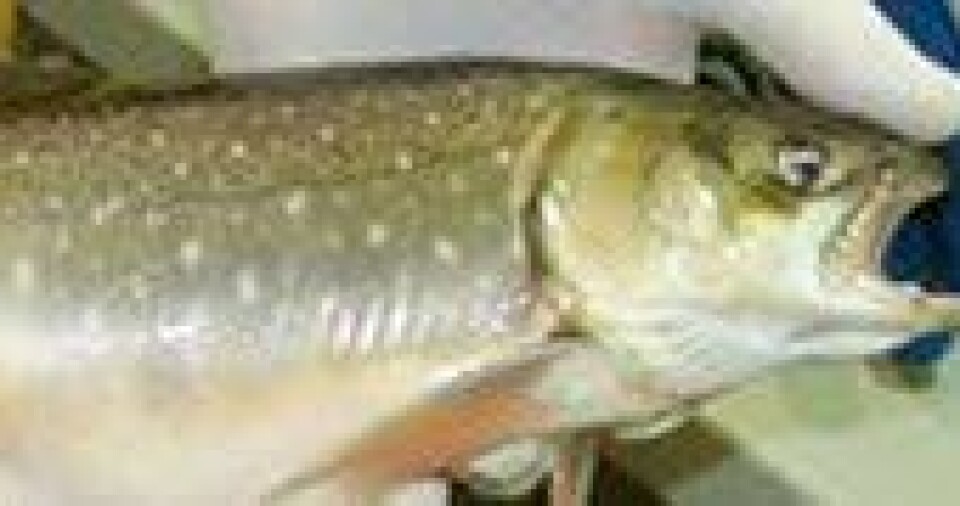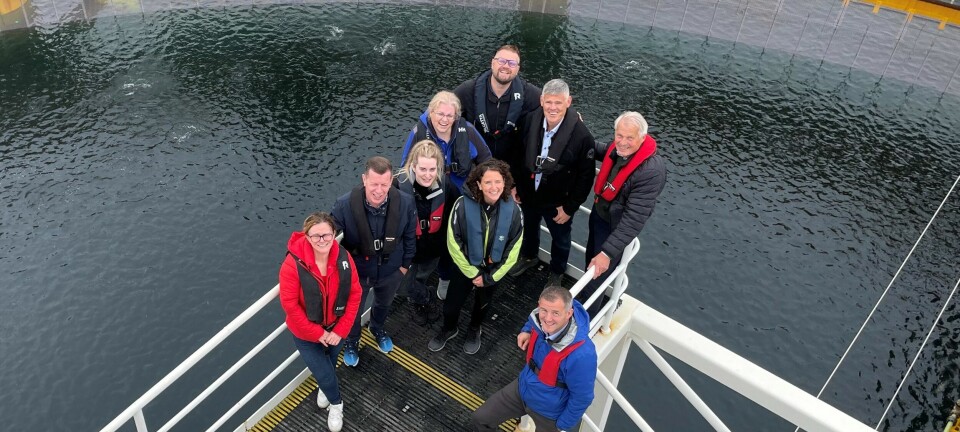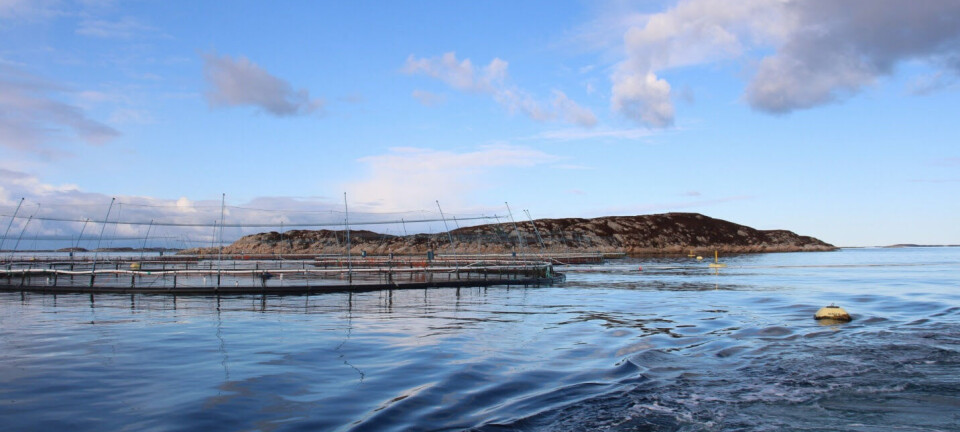
Arctic char produced in freezing seawater
These are not the first Arctic char to be produced in Canada. Farms are located in the Provinces of Nova Scotia, New Brunswick, Quebec and Manitoba and in Whitehorse in the Yukon Territory. But all of the other facilities are using land-based tanks and fresh water instead of ocean net pens. One of the advantages with this species of farmed fish is that it can be grown at very high densities, making the extra costs associated with land-based farming affordable in some situations. The sea water operations on the south coast of Newfoundland face additional challenges with sea-surface freezing in winter, much like some Finnish trout farmers in the Gulf of Bothnia.
The Coaster newspaper had a feature on the Nordic Salmon project in Newfoundland earlier this week;
Don’t tell John Kealey of St. Alban’s, NL, that he can’t do something, as chances are he will prove you wrong. In 2008 fishery officials told Kealey that Arctic char are “a disease ridden scumbag bunch of fish” and that the 12,500 char he started with in June 2008 would be “dead in the water” by September of that same year. It seems like Kealy has proven the experts wrong again. In 2007, John Kealey and Cosmas MacDonald sold their interests in a steelhead trout farm to pursue the farming of Arctic Char even though many industry specialists advised them that char would not survive in our marine waters. 12,500 char were delivered from North River Fish Farms in Nova Scotia to the site in St. Alban’s to start the process.
Arctic char, a freshwater fish, occupy a wide variety of habitats in Arctic and sub-Arctic temperate and maritime climates. They can survive for long periods of ice cover in very cold waters. However, char farming in Canada, and in other areas of the world, is mainly conducted in land-based systems while marine efforts focus on salmon and trout. Norwegian seawater trials with char indicated high water mortalities especially during the first winter.
The Arctic char industry in North America, Europe, including Iceland, is utilizing land based production tank systems with elaborate pumping systems using a mixture of ground water and salt water to create an artificial marine environment so the char will grow. This land-based system has a very heavy environmental footprint, but the upside is with controlled temperature do get their char to market much faster than our natural ocean grow out.
Kealey said, “99 per cent of the experts told us that you couldn’t keep char in salt water for more than 100 days, as they eventually need fresh water to survive. As far as I’m concerned, there is a layer of fresh water on the surface out here around Bay d’Espoir. The char swim to the surface, take two or three mouthfuls and flush out their systems when needed.” And it appears that Kealey and MacDonald were right all along. Nordic Salmon Co. with the assistance of Dr. Arnold Sutterlin, Dr. Jim Duston, Agricultural College Nova Soctia, Dr. Dumas, Dr. Kurt Gamperl MUN, Dr. Claude Pelletier, CZRI Shippigan and DFO Dr. Dounia Hamoutene have, over the past two years, established that Arctic char can survive and complete the commercial grow out cycle in the Bay d’Espoir marine environment. “With the scrutiny of environmentalists and conservation groups we decided it would be prudent for Nordic Salmon to choose the ocean net pen production system with no generated energy equipment,” said Kealey. “Any waste or feces created by our ocean operation is diluted, dissolved and absorbed by the ocean flushing and in actual fact enhances the marine vegetation and other ocean species. Our char are fed 100 per cent natural organic ingredients with no force feeding or chemicals added to diet”.
“From past failed experiments the research scientists had concluded that Arctic Char would not survive in our marine conditions” stated MacDonald. “We had many discussions with Department of Fisheries and Aquaculture and the Nova Scotia Agricultural College to confirm these significant obstacles. They viewed survival of char in salt water environments as improbable if not impossible and ended either in failure, with most fish succumbing or with very limited growth if the char did survive.” “We were aware of a such project in the 1980’s which concluded that there were significant limitations and technological risks that faced growing char in maritime sites, and the knowledge had not yet been gained for successful sea farming” stated Kealey. “The main obstacle was the lack of information on the survivability and growth performance of various strains of char in a wide range of temperatures and salinity in our marine conditions off the south coast of Nfld. We determined that with more detailed analysis and experimentations, we could raise char on the south coast of NL.”
The main restrictions was the lack of knowledge related to salinity and temperature, schooling, stocking, vaccines, smolt entry size, photo period, strain, feed type and frequency, related fish health, growth and survival rates. If we can establish a growout program to meet these objectives, then we would have the basis for a marine Arctic char cage culture operation. “For the past couple of years we have been assessing the performance of the two anadromous strains of Arctic Char. The first cage has the High Arctic Nauyuk Tree River Cross (from the south coast of Victoria Island in the Beaufort Sea) and the second cage has the Fraser River Labrador strain, which is genetically related to the European char. Both strains are performing very well and had no apparent adverse effect due to either warm water temperature, 20 degrees in August or over wintering and did select their comfort zone irrespective of salinity,” said Kealey.
Nordic Salmon has scheduled initial delivery of Nfld. Marine Arctic Char Product for the US market last of May and early June. “There is a strong desire among reputable seafood buyers to have consistent supplies of quality Arctic Char that are available fresh all year round stated,” Kealey. Arctic Char (sometimes spelled charr) are genetically closely linked to the brook trout. Individual char can weigh up to 20 lbs. or more with record sized fish having been taken by angling in Northern Canada. Generally, whole market sized farmed fish are between 2 and 5 lbs. in weight. The natural flesh color of Arctic Char is a deep coral pink.























































